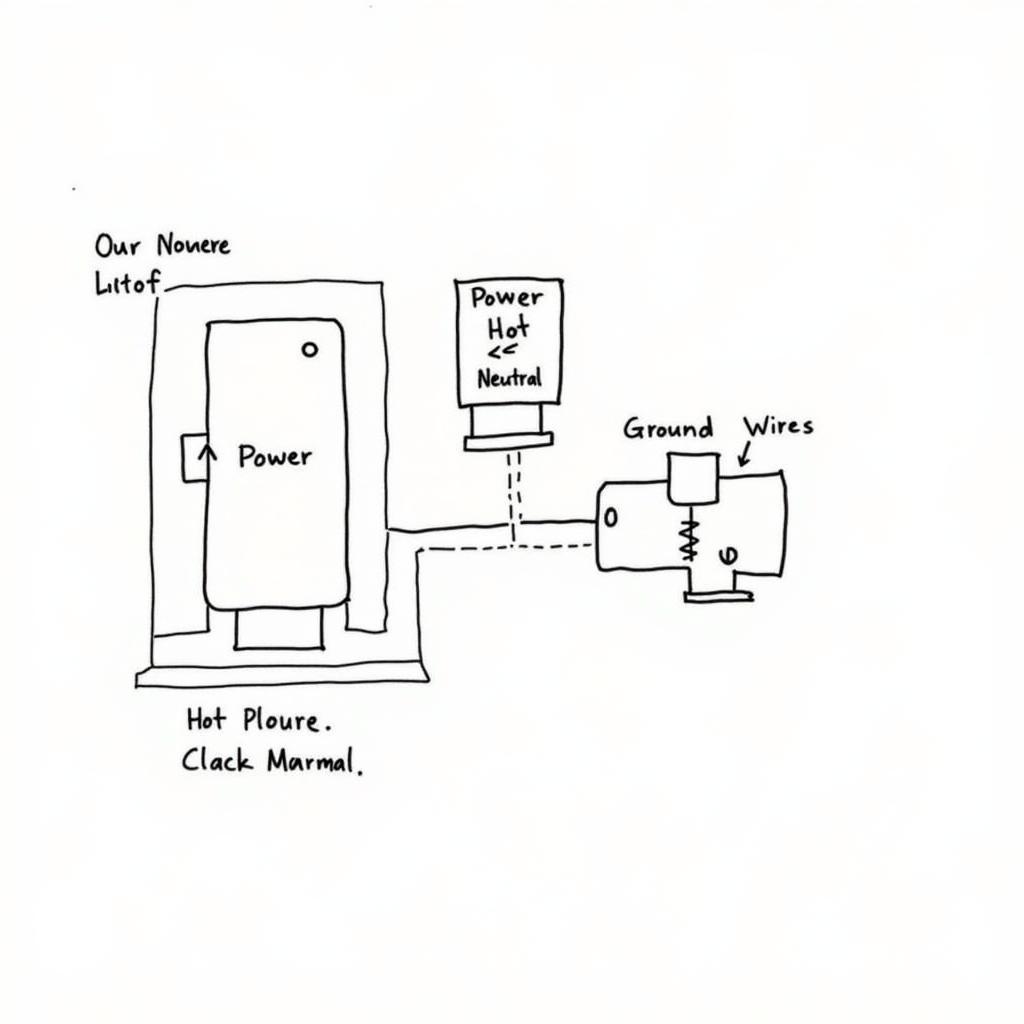In the world of electrical wiring, understanding the different wire colors is crucial for safety and proper functionality. Each wire color signifies its purpose and voltage level. Today, we’re diving into the neutral wire, a critical component of your home’s electrical system. Let’s explore what a neutral wire is, its color coding, and why it’s essential.
The Role of the Neutral Wire
Think of your electrical system as a loop. Electricity flows from the power source (your utility company) through the hot wire, powering your appliances and lights. The neutral wire provides a return path for the electrical current, completing the circuit and allowing electricity to flow back to the source. Without a neutral wire, the electricity would have nowhere to go, potentially causing overheating, damage to your appliances, or even electrical fires.
 Neutral Wire Diagram
Neutral Wire Diagram
Identifying the Neutral Wire Color
In most residential wiring systems, the neutral wire is identified by its white or gray color. These color codes are standardized to ensure consistency and ease of identification for electricians and homeowners. This uniformity minimizes confusion and the risk of electrical mishaps.
However, it’s essential to remember that there can be exceptions. In some older homes or specific wiring configurations, you might encounter different color codes. Therefore, it’s always recommended to double-check with a qualified electrician, especially if you’re unsure about the wiring in your home.
The Importance of a Properly Wired Neutral
A properly wired neutral is non-negotiable for a safe and functional electrical system. Here’s why:
- Safety First: The neutral wire ensures that excess electricity has a safe path back to the source, preventing electrical shocks and potential fires.
- Appliance Performance: A well-grounded neutral wire helps your appliances operate at their optimal voltage, maximizing their lifespan and efficiency.
- Preventing Electrical Noise: A stable neutral helps reduce electrical noise or interference, which can impact sensitive electronics.
Neutral Wire vs. Ground Wire: What’s the Difference?
While both the neutral and ground wires are essential for safety, they have distinct roles:
- Neutral Wire: Provides a return path for current in a normal circuit.
- Ground Wire: Provides a safe path for electricity to flow to the ground in case of a fault or short circuit, protecting you from electric shock.
 Grounding Wire Function
Grounding Wire Function
FAQs about Neutral Wires
Q: Can a neutral wire ever carry current?
A: Yes, the neutral wire carries the same amount of current as the hot wire during normal operation. However, it’s important to remember that it’s still a live wire and should be handled with caution.
Q: What happens if the neutral wire is loose?
A: A loose neutral connection can disrupt the flow of electricity, leading to voltage fluctuations, flickering lights, and potential damage to appliances.
Q: Can I use a different color wire as a neutral?
A: While it’s technically possible to re-purpose a wire with a different color code, it’s strongly advised against. This practice can create confusion and safety hazards in the future. Always consult with a licensed electrician for any rewiring needs.
Need Help with Your Electrical System?
Understanding the basics of your home’s electrical system is crucial for safety. If you have any doubts or concerns about your neutral wire or any other electrical component, don’t hesitate to contact our team of experts at Color Box Hanoi. We’re here to provide you with professional guidance and ensure your home is safe and well-maintained.
Contact us today:
Phone: 0373298888
Email: [email protected]
Address: 86 Cầu Giấy, Hà Nội.

